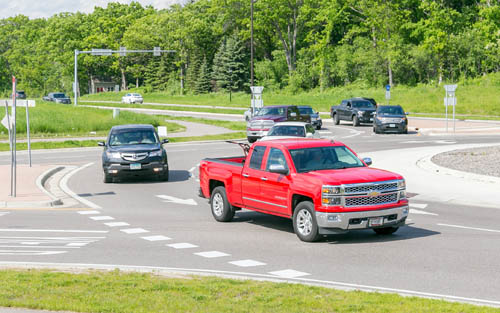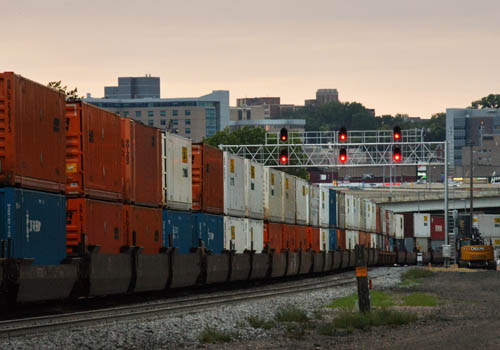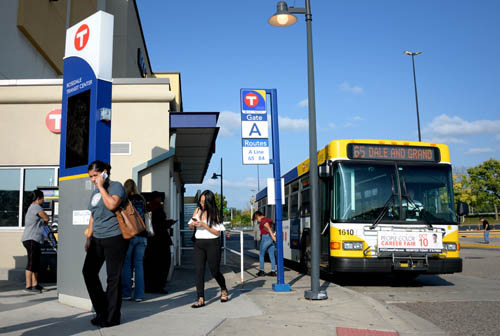The Metropolitan Council has approved an update to the region’s 2040 Transportation Policy Plan, which provides a framework for how our region will support the movement of people as we plan for growth into the future. The 2018 update to the plan addresses trends that have emerged since the 2040 plan was first adopted in 2015 and includes new information.
 “This update will help guide thoughtful, coordinated decision-making between local units of government, the state and the Council,” said Chair Alene Tchourumoff.
“This update will help guide thoughtful, coordinated decision-making between local units of government, the state and the Council,” said Chair Alene Tchourumoff.
“Good planning doesn’t end after creating a plan – it includes checking in with government and community partners to ensure the long-term plans are on track, adjusting where necessary, and accounting for new trends and information,” she said. “This update is the result of thoughtful collaboration with partners across the region.”
The Council’s approval on October 24 marks the end of a nearly two-year-long process, involving many stakeholders and meetings, including technical staff, policymakers, and people in the region. In addition, another 150 people and organizations submitted public comments that are reflected in the final version of the plan.
The Transportation Policy Plan contains detailed information about the region’s transportation system, including highways, transit, and bicycle and pedestrian infrastructure. The plan also addresses regional freight movement and airports. It identifies policies for maintaining, managing, and improving the region’s transportation system. Those policies guide the investment plans for each aspect of the system. The plan is required by the federal government and must be updated every five years.
Highlights of the 2018 update
-
Updated fiscal projections for highway and transit system investment
-
Funding commitment for new major highway and transit investments
-
The creation of performance measures to guide investment
-
Addressing key challenges and opportunities in transportation over the long-term, including autonomous vehicles and shared mobility systems
-
Results from recent transportation planning studies, such as the Regional Truck Freight Corridor study
 Plan includes two funding scenarios
Plan includes two funding scenarios
The 2040 Transportation Policy Plan identifies two funding scenarios: one based on anticipated revenues, and a second scenario based on the availability of additional funding, if it were to become available. Anticipated revenues are based on current local, state and federal laws and programs – including growth rates consistent with historical trends.
Under the current revenue scenario, the region is estimated to receive $92 billion in transportation funds from all sources through 2040. Of that, $41 billion would be for local transportation, nearly $16 billion for state highways and $35 billion for transit.
The 2018 update also more clearly acknowledges local funding sources for regional transportation, including property taxes, sales taxes, and wheelage taxes.
A majority of funds for state highways would pay for maintenance, management and repair of the existing metropolitan highway system. Another priority is investments that improve mobility on the existing highway system.
Funding will support build-out of arterial rapid bus network
For transit, funds will support the existing system and the build-out of the arterial rapid bus network and other regional transitway corridors:
-
METRO Orange Line (I-35W south bus rapid transit)
-
METRO Green Line Extension (Southwest light rail)
-
METRO Blue Line Extension (Bottineau light rail)
-
METRO Gold Line (Gateway dedicated bus rapid transit)
-
Rush Line dedicated bus rapid transit
-
C Line bus rapid transit on Penn Avenue North
A number of other corridors are identified in the plan as still being studied and primed for future implementation, including BRT lines on Chicago-Emerson-Fremont Avenues in Minneapolis, Lake Street and Marshall Avenue in Minneapolis and St. Paul, and Hennepin Avenue in Minneapolis.
 Plan identifies key challenges and opportunities
Plan identifies key challenges and opportunities
The plan identifies key regional transportation challenges and opportunities. These areas provide the framework for policy discussion in the next several years in anticipation of the next plan update.
“Emerging technologies in transportation have the potential to significantly impact our approach to planning and providing services,” Chair Tchourumoff said. “We’re particularly anxious to see how vehicle technologies evolve and how we might integrate more electric vehicles into our fleet. But we’re also mindful of the amount of electric power we consume and ways to use renewable sources to address our overall climate impact.”
Identified issues include:
-
Balancing funding for the aging highway system and the emerging transit system
-
Changing travel patterns
-
Addressing highway congestion
-
Technology and its influence on travel
-
Addressing equity in transportation planning and investment
-
Sustainable environmental practices, related to emissions, environmental health, and electric vehicles (both personal and transit)
-
Assuring connections between transportation and land use to foster regional prosperity